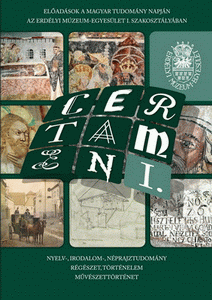Miért? Kinek? Mit? Erdélyi középkori végakaratok szerkezeti jellemzői
Why? To whom? What? Structural Patterns of Last Wills and Testaments in Medieval Transylvania
Author(s): Mária Lupescu MakóSubject(s): History
Published by: Erdélyi Múzeum-Egyesület
Keywords: Transylvania; Middle Ages; testament; piety
Summary/Abstract: It is well known that most of the available written medieval sources consist of documents referring to the right of possession. These have been best preserved, as serious interests were connected to them, the right of possession of one or more properties depending on them. Fortunately, besides the documents conveying the restricted view of the right of possession, there were other sources as well, whose coming into being was motivated by other factors. Their value lies in their distinct character and their significance is even increased by the fact that a smaller number of them has been passed down to the posterity. A distinct part of them is constituted by the testaments reflecting on the end of life. The interest of historians has turned towards the research of testaments especially in the last decades. They have been studied for the light they throw upon the development of religious opinions, the changing nature of charitable bequest, the family structure, the division of fortune or even the division of work between men and women. Research has tended to focus on particular communities or topics. This survey takes a substantial view of the introduction part of the medieval Transylvanian testaments. As we shall see, certain elements, especially in the preamble to the wills, are common to the great majority of medieval Transylvanian wills, but there were also considerable differences in patterns of pious and charitable bequests between regions, communities, as well as between town-people and nobility. Thus, the charitable bequests, the funerals, the bequests for prayers and masses, the remembrance services, and the material help for the poor are the main themes of this paper.
Journal: Certamen
- Issue Year: 2013
- Issue No: I
- Page Range: 191-210
- Page Count: 20
- Language: Hungarian

